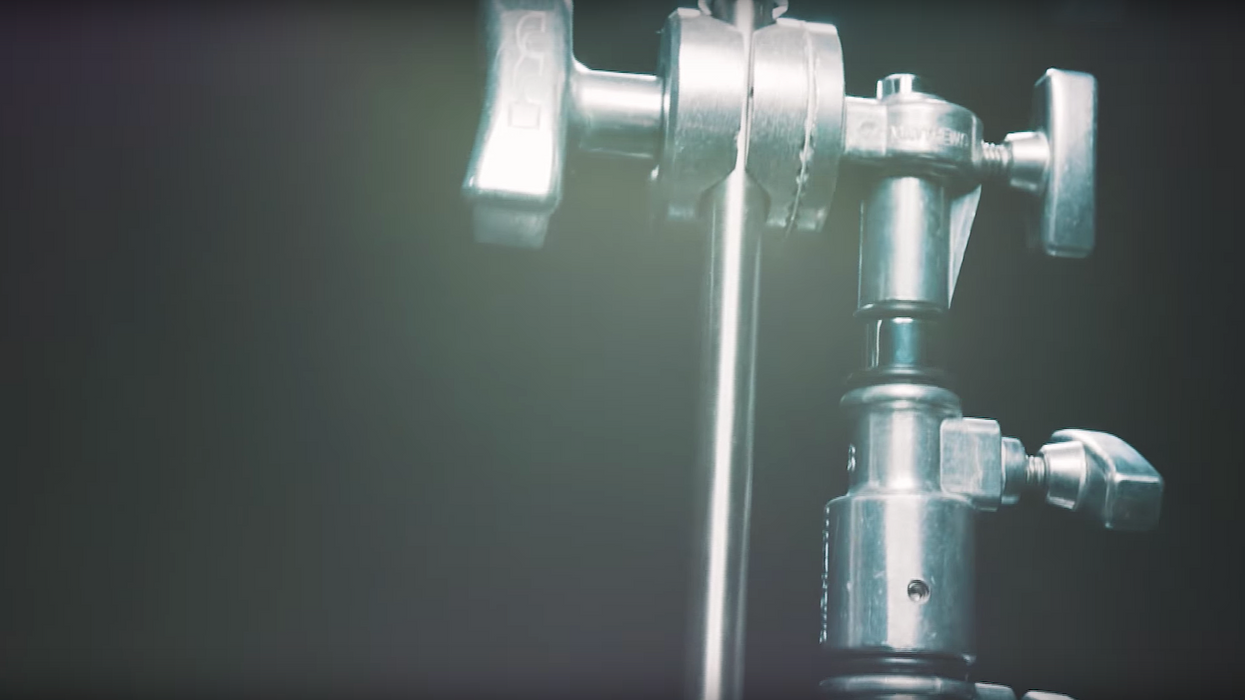C-Stands 101: How to Use 'Em and How Not to Use 'Em
Learn how to use one of the most essential pieces of filmmaking gear like a pro.

C-stands, or "Century stands" as they were called back in the 1920s, may not look like much, but they're actually one of the most useful and versatile weapons in a filmmaker's arsenal. Employed across several different departments, C-stands can be used to mount and fly just about anything, from heavy studio lights to shotgun microphones. In this video, filmmaker Todd Blankenship of Shutterstock Tutorials gives you a quick overview of not only where C-stands originated but also the many different ways they can come in handy when working on a film set. Check it out below:
When you first get your mitts on a C-stand, setting it up looks relatively straightforward despite all of the knobs and pieces. You've got the legs, the stand, the grip heads, and the gobo arm, on which you mount whatever piece of gear or modifier you're working with— pretty simple.
However, there is a bit of an art to setting these things up and doing it incorrectly can not only result in your equipment falling and getting damaged but your cast or crew getting injured.
- Opening up a C-stand: There are a few methods of opening these bad boys up. You can sling it over your shoulder, set it upside down, or set it right-side up and open its metal legs against your own human legs. Also, some C-stands have a quick-release lever that lets you just swing the legs open.
- Proper use: Like I said earlier, there is a right and wrong way to use a C-stand. First, you always want to make sure that the gobo arm (which will carry the weight of your equipment) is always over the biggest leg. Second, always have your grip head knobs on the right side of your gobo arm, because this will allow the weight of your equipment will actually cause the grip heads to self-tighten.
- Safety: Proper use of a C-stand really falls under the "safety" category, but just go with it. There are a few things you can do to ensure that your C-stand is as safe as possible. You should not only always place sandbags on the biggest leg (contrary to somewhat popular belief that they should go on the legs opposite the weight) but you should also make sure that the sandbags aren't touching the ground. If your gobo arm is sticking out in an area with a lot of foot traffic, you can either angle it up to keep it out of the way or stick a tennis ball on the end of it to make it more noticeable to those passing by.
If you want some more advanced lessons on working with C-stands, Dave Donaldson of Grip Tips gets into the nitty-gritty of on-set use, including different types of C-stands, creative mounting techniques, and how to soldier them after use.
What are some other tips on using C-stands? Let us know down in the comments.
Source: Shutterstock Tutorials












